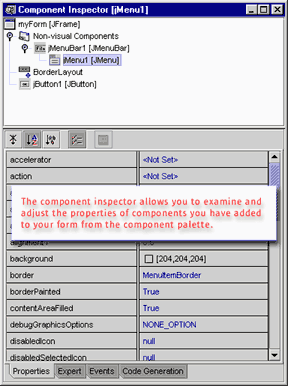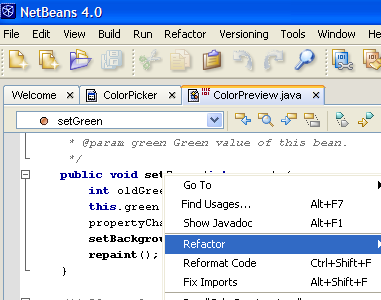NetBeans is 10 today!!
The beginnings

It all started in 1996, twelve years ago, when three students of mathematics at Prague wanted to build a Delphi-like development environment in Java. One of those students is Jaroslav Tulach who is still working at NetBeans (as far as I can tell he's worrying that the development team writes great APIs and that things work ok. He's recently written a book on API Design).
They started a company, and in the spring of 1999 NetBeans DeveloperX2 was released. At that time everybody was mad about Java Beans, so having "Beans" in the name was very important. (In fact during most of the history of NetBeans following the Java Beans specification was most important, and lots of different parts of NetBeans do still follow and use the specification).
I can hardly remember those years. I think there were too little development environments for Java, Symantec's Visual Café being one of them. I remember this IDE because the templates for AWT frames it created had a severe threading issue (that brought me mad!!).
2000 - Meeting Sun
Sun got interested in NetBeans, and in the summer of 1999 (a fews monts after NetBeans DeveloperX2 was released) Sun contacted NetBeans.

In the fall of 1999 the deal was done. The NetBeans team insisted that they wanted that NetBeans was open sourced, and so it was. http://www.netbeans.org was launched in June 2000 (want to see what it looked like in aug. 2000?).
2001 - Awards and redesign
As soon as february, 2001, NetBeans was already winning awards.
And in as of June, 2001, Jaroslav Tulach won a JavaPro award because of the NetBeans Filesystem Library.
During 2001 the IDE was changed internally to support modular development. The idea of NetBeans architects was to create a platform. A common basis to allow people to build any sort of application, and not just IDEs.
2002 - Forté for Java and NetBeans 3.4
Sun had also bought Forté for Java, and in 2002 Forté for Java Community Edition (that was based on top of NetBeans) was released to the public, again winning awards.
In august, 2002, NetBeans 3.4 was announced. I remember that version fondly. NetBeans had the concept of "mounting filesystems", and you had to mount all stuff in your project: your jars, your source folders, etc. I think that was a clear concept, and I miss it from time to time!
2003 - Speed, speed!
If I recall correctly, 2003 was the year of performance concerns. Lots of things were changed internally to speed up things. The way modules were registered and installed, for example, changed dramatically. NetBeans 3.5.1, released at the end of the year, performed "like a native application".
2004 - NetBeans 4
2004 was also a year of changes. Version 3.6 was released during the first quarter of the year, but the main milestone of the year was, I think, version 4.0, that was released in december, 2004.
Version 4.0 represented a major change for the user. The concept of "Project" as we know it today appeared in that version. Version 4.0 introduced integration with ant, so you could build your proejcts both from within the IDE and from the command line. That was one of the features I liked most about the new version of the IDE.
2005 - NetBeans 4.1, wow
2005 was another interesting year. Version 4.1 had an impressive support for JavaEE and for mobility. You could deploy your J2EE applications from within the IDE.
I also remember version 4.1 with pleasure. J2EE development was indeed very easy!!
During that year the "profiler" started to be integrated with NetBeans.
2006 - NetBeans 5.0, impressive
As soon as January, 2006, NetBeans 5.0 was released.

One of the most important features I remember of that release is the Matisse GUI Builder.
I must admit that one of features that I've liked most about NetBeans is its GUI builder. I've always been a fan of Swing, mainly because I've fought Motif, wxWidgets and Windows GUI in the past. During all 10 years of NetBeans life I've always been in love with its GUI builder!!
This was the time I decided to take NetBeans Module Development seriously. I started blogging and writing about NetBeans Module Development. And I decided to build a Scheme IDE on top of it (more info on this soon).
2007 and 2008 - Languages, gimme languages
NetBeans 6.0 (and its sister 6.1) was all about third-party languages. The IDE, that had been targetted mainly to Java development, accepted now C and C++ (coming from the excellent Sun's Studio tools) and Ruby.
As of today NetBeans includes many different languages, including Ruby, PHP, Scala, C, C++, Fortran and, of course, Java. There're lots of other languages in the works, so keep tuned.
A long trip indeed... Happy Birthday!!
And that's it. All I can say is that NetBeans has been a companion of mine all during these 10 years. It has helped me build lots of different applications, from easy to complex enterprise-strenght ones.
As of today NetBeans is my preferred IDE. Is the tool I trust.
So... Happy Birthday, NetBeans!!
blog comments powered by Disqus